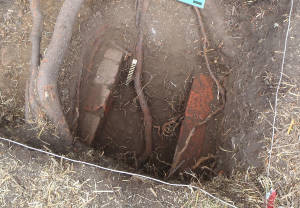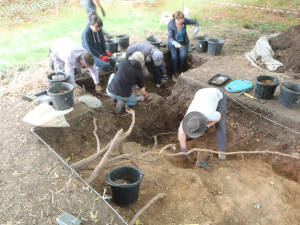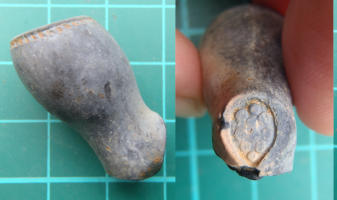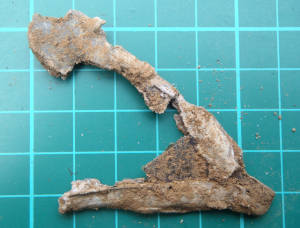03 Sep 2021
Forty Hall Summer Dig - Day 12

Work is beginning to wind down now, as we near the penultimate day of our two week dig on the site of Elsyng Palace in Forty Hall.
We've now wrapped up all the work in the area of trench one, which was examining the course of the brick water conduit we first saw in 2018.
Having revealed the top of the channel yesterday afternoon, today we partially excavated the fill of the conduit to a depth of three brick courses, but since we're nearing the end of the dig we elected not to fully excavate it, as we did this already at a previous position in 2018 and it wouldn't have told us much that we don't already know.
Having answered the relevant research questions (i.e. the channel has nothing to do with the gatehouse), we therefore phographed it, drew it and then backfilled it together with the rest of trench one.

At the same time we wound up work at the east end of trench two, and also began backfilling it, leaving only the west end of the trench, with our deep rubble-filled demolition cut, still active.
We slightly enlarged the extended area of the trench to improve access this morning and are now making one last push to remove the substantial fill of rubble and to define the shape of what looks like a steep linear, roughly east-west aligned cut.
Whatever structure this cut is associated with, be it the inner gatehouse or something else, we are still only right on the very edge of it at this end of the trench and probably won't get to see anything much more substantial this year, but it should hopefully set us up nicely for some great archaeology the next time we dig here.

The rubble fill continued to throw up all sorts of excellent small finds throughout the day, including the bowl of what is probably the smallest and earliest tobacco pipe we've ever found.
This one is even smaller than the one we found on Tuesday, which again reflects the high price of tobacco not long after it was first introduced to Europe.
This bowl is barely 2cm long and less wide, which probably puts it in a date range of 1580 to 1610, and has a maker's mark on the foot.
Once we have time to look it up, this should get us a more accurate date range and hopefully a place of manufacture, and perhaps even the name of the maker.

Right at the base of the cut we also found an astonishingly delicate find in the shape of a section of a diamond-shaped window pane, with the lead channels (known as 'cames') forming one corner, and a fragment of glass still set in them.
The last time we found anything like this was in 2015 when we found a complete pane in the base of a garderobe chute, not too far away.
Although this fragment is nowhere near as complete, it is just as astonishing to find something so delicate to have survived not only the demolition process but more than 350 years in the ground. It is also more strong evidence of a building very close by, as a fragment like this cannot have travelled far from where it derived.